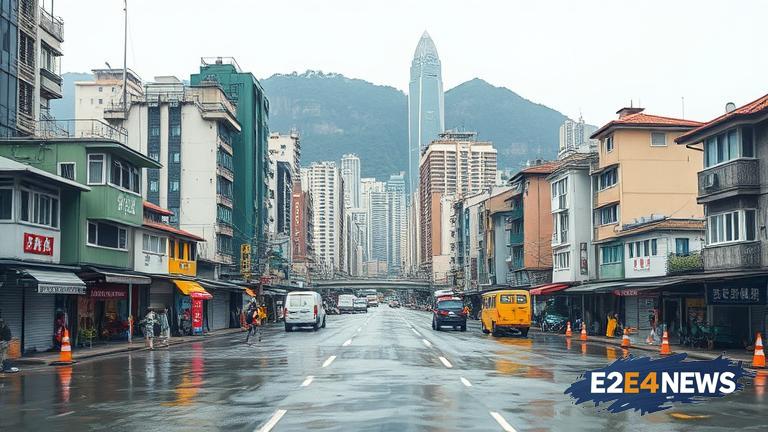Hong Kong, being a densely populated city, is prone to various types of disasters, including typhoons, floods, and landslides. The city’s unique geography, with steep slopes and low-lying areas, makes it vulnerable to these types of events. In recent years, Hong Kong has experienced several major disasters, including Typhoon Mangkhut in 2018, which caused widespread damage and disruption. To mitigate the impact of these events, the Hong Kong government has implemented various measures, including the development of a comprehensive disaster management plan. This plan includes measures such as early warning systems, emergency response protocols, and public education campaigns. However, despite these efforts, there is still a need for more proactive preparation and planning to ensure the city’s resilience. One key area of focus is infrastructure, with a need for more robust and resilient buildings, roads, and other critical infrastructure. Additionally, there is a need for more effective communication and coordination between different government agencies and stakeholders. The private sector also has a critical role to play in supporting disaster resilience, through initiatives such as business continuity planning and employee training. Furthermore, there is a need for more research and development into new technologies and innovations that can support disaster resilience, such as advanced early warning systems and resilient materials. The community also has a vital role to play, through initiatives such as volunteer programs and public awareness campaigns. By working together, Hong Kong can build a more resilient and sustainable city, capable of withstanding the impacts of disasters and crises. The government, private sector, and community must all work together to prioritize proactive preparation and planning, and to invest in the necessary infrastructure, research, and development. This will require a coordinated and sustained effort, but the benefits will be significant, including reduced risk, improved public safety, and enhanced economic resilience. In conclusion, Hong Kong’s disaster resilience depends on proactive preparation and planning, and it is essential that all stakeholders work together to prioritize this effort. By doing so, Hong Kong can build a more resilient and sustainable city, capable of withstanding the impacts of disasters and crises, and ensuring the well-being and safety of its citizens. The city’s unique challenges and opportunities require a tailored approach, and it is essential that all stakeholders are aware of the risks and take proactive steps to mitigate them. Ultimately, the key to Hong Kong’s disaster resilience lies in its ability to prepare, respond, and recover from disasters, and to build a more resilient and sustainable city for the future.
